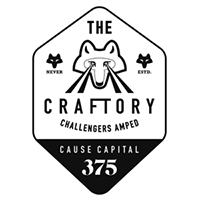Physical Retail is Dead. Or is it?
Image by Michael Prewett
How physical stores can be good for your brand, even if everyone else is struggling.
Physical retail has been struggling these last few years – and the pain seems to be accelerating. In the US we’ve seen numerous businesses go into Chapter 11, including American Apparel, Claire’s, Sears, The Limited and Toys R’ Us.
We see the same in the UK and other parts of the world, with companies like BHS and Maplin disappearing from the high streets. And several retailers using a Company Voluntary Agreement (CVA) to force landlords to allow them to close stores or continue at much lower rents – e.g. Homebase, House of Fraser and Mothercare.
Most of these businesses are struggling because they’d over-expanded, were coming under pressure from online (online competition and their own volume shifting to online), and also – perhaps most critically – they had failed to stay relevant to their customers.
So is it all over for physical stores? It certainly doesn’t look good, does it?
But perhaps not. While the big incumbents are undoubtedly struggling and closing stores, there are plenty of young, dynamic direct to consumer (DTC) brands opening up a focused number of stores around the world. Like Allbirds, Away, Deciem/ The Ordinary, Everlane, Glossier and Heist. We also see examples of people using pop-up stores and concessions (dedicated space in larger multi-brand stores) to good effect. So we’re not talking about selling on the shelf in Wal-Mart, but instead spaces run exclusively by and for the brand.
Everlane has been a hugely successful clothing business based out of San Francisco – with sales through their own website. But they’ve now opened a couple of compact stores in New York and San Francisco to allow customers to experience the brand in person.
We also see food brands opening ‘stores’ – e.g. Deliciously Ella and Rude Health each have a café in London, allowing customers to taste and buy their products as well as experience the brand more broadly. This is an excellent, tangible way for the brand to come to life.
There are early signs that opening a small number of stores helps online sales. John Lewis (the UK department store) was finding this a decade ago. When they opened a new physical store, online sales in the region would increase 30-40%. And they found customers who shopped online as well as in store spent 3 times as much (compared to a customer who shopped in one channel).
More recently, Away has shared that online sales go up 40% when they open stores in the region – which is “meaningfully greater” than the growth in regions without a store. We’ve seen several businesses report 20% - 50% increases on the back of having a physical store in the area, including Bonobos, Casper and Hatch. There are even some early reports of customers who shop online and in-store spending 50% - 100% more with the business. Not as impressive as John Lewis’s 3x from a decade ago – but not bad!
It’s worth noting that some DTC businesses have opened stores in a more concerted way, for example Deciem have 30 stores and Warby Parker have over 80 already, both having started out online. This would require much more consideration. On the whole we don’t think this is a good idea for most DTC businesses.
Looking at the economics of it all more closely, there are clearly lots of extra costs in rent and rates, labour and store fit out. But there are also savings in customer acquisition and delivery/ returns costs. Net profit often comes back to being pretty similar for DTC vs. the physical shop, albeit with a very different shape of costs between gross profit and net.
But the big win is really in allowing customers to experience the product and the brand at their best, first hand.
Many products benefit from the customer being able to see, touch, smell and maybe even taste and hear the product – tapping into the senses. We’re thinking here of being able to try on cosmetics, find the scent of perfume you like best, taste the food, and even see how easy it is to clean your home (Dyson, the vacuum cleaner business, have a store where they throw dirt on the floor so you can clean it up with their products …). All of which helps to boost conversion.
A small number of outstanding stores is also a great way for the brand to show the customer (and their own business) what good looks like – the true embodiment of the brand. Brands which do this well create a destination for their loyal customers, with people willing to make the journey to go and experience all the brand has to offer.
These stores can serve as an exemplar for everything else the brand does. We would almost prefer brands to think of physical stores as marketing investment, and be delighted when they end up making money.
The broader world of retail and physical stores is going to be unbelievably tough over the next few years. But don’t let that put you off if you’re a vibrant, growing DTC brand. Physical stores can play a tremendously useful role for you and your customers. Just don’t open too many.
Jonathan Miller is Craft Partner: Scale Up! at The Craftory, the counter-corporate anti-VC on a $300M mission to back the world's boldest challenger brands in the consumer goods space.


